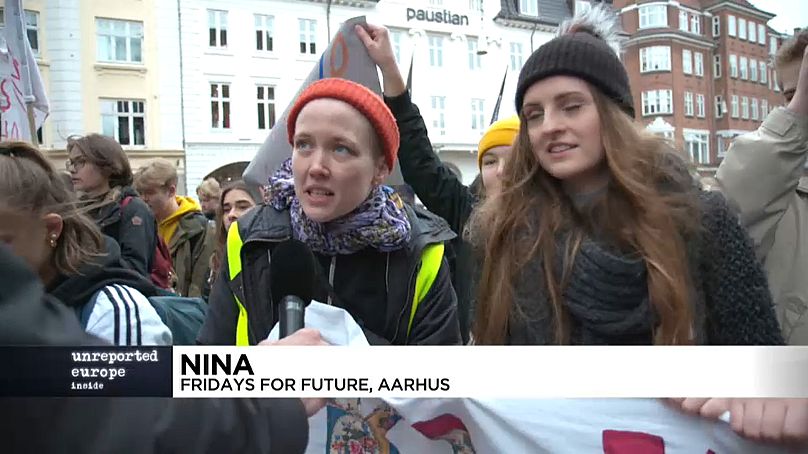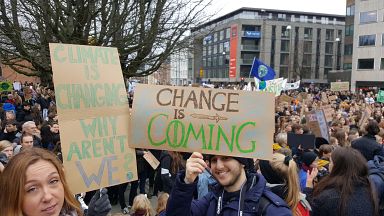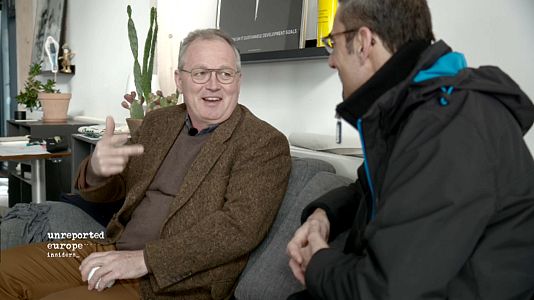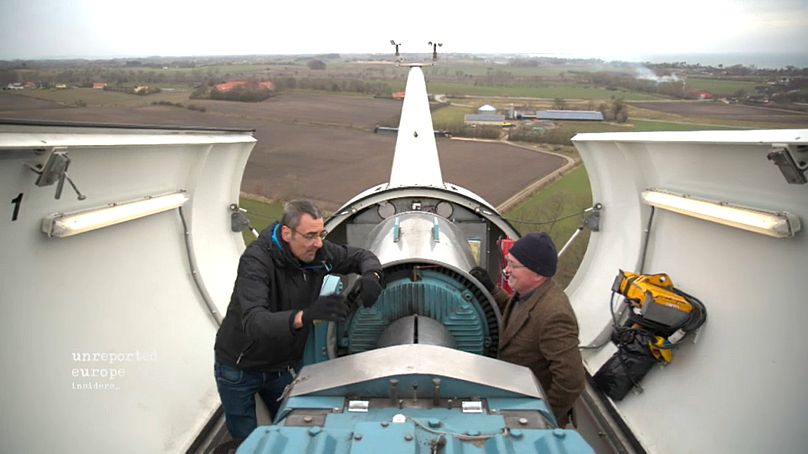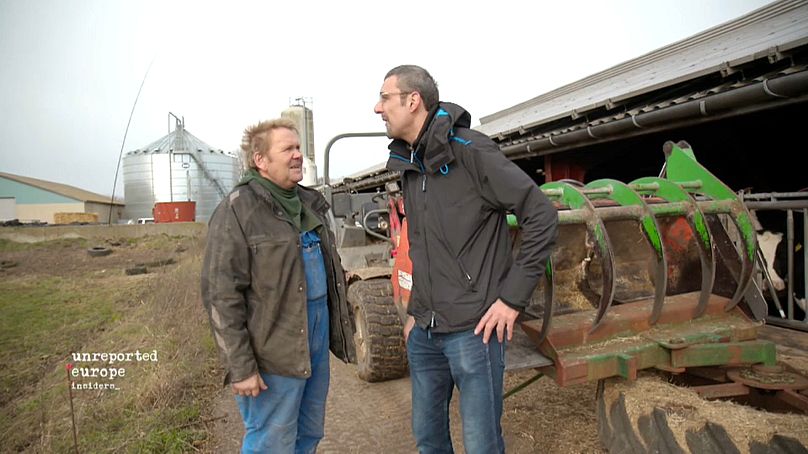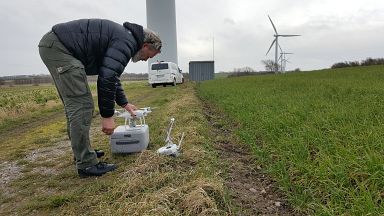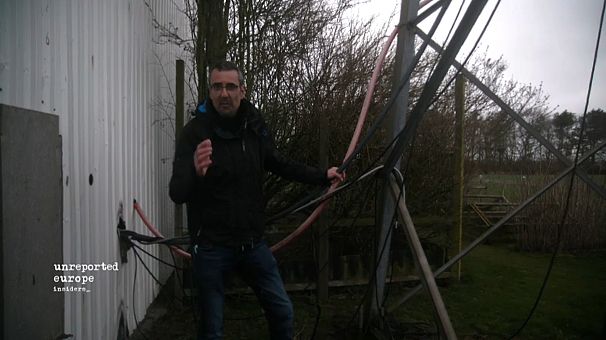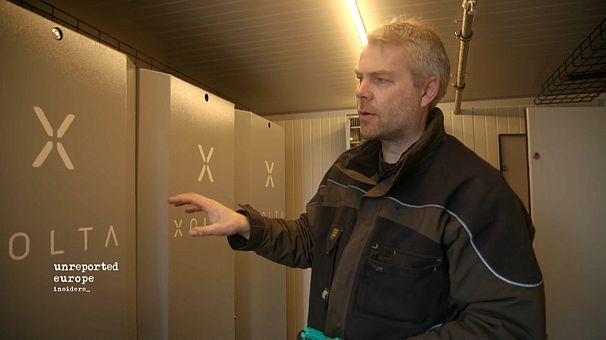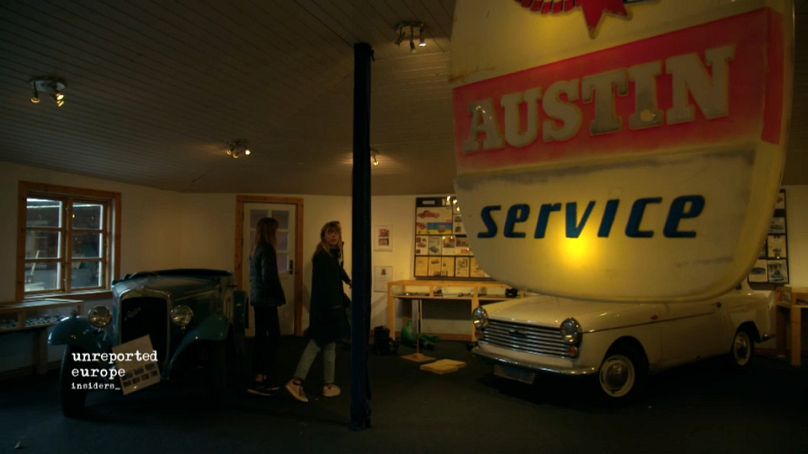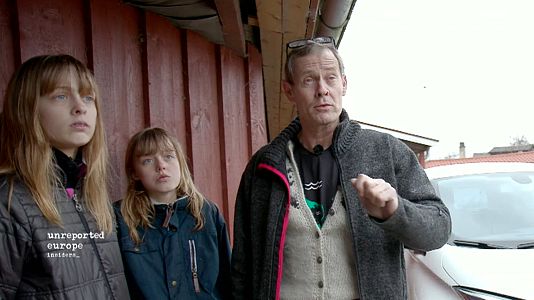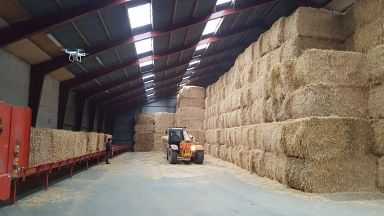In this episode of Insiders, Euronews' Hans von de Brelie travels to Denmark to find out about the efforts on the island of Samsø to slow down climate change.
In this episode of Insiders, Euronews' Hans von der Brelie travels to Denmark to find out about the efforts of one island to slow down climate change.
In the Danish city of Aarhus, young demonstrators gather to demand immediate action to tackle climate change. The rally in Denmark's second biggest city is part of a global movement called 'Fridays For Future' and comes ahead of this May's key European elections. Those taking part in the march accuse politicians of dragging their feet in the battle against global warming.
Apprentice chef Nina is one of protest organisers. She says, "It is going wrong, that the politicians, the world society, they signed the Paris agreement three years ago, but they do not live up to it. They do not have plans how to reach the goals and that is why we are here on the streets today."
Protecting the environment is one of the biggest concerns for many voters in Europe and a hot topic ahead of next month's European poll.
The green island
Away from Aarhus, the Danish island of Samsø has become a poster child when it comes to fighting climate change. A world leader in sustainable energy, Samsø achieved 100 percent power independence in less than five years thanks to a community-wide commitment. The adventure began when Samsø won a national contest to create a strategy that would reduce Co2 emissions.
The Princess Isabella was part of that masterplan, becoming Demark's first domestic ferry to be powered by liquefied natural gas.
In the engine room of the climate friendly ferry
Using LNG instead of diesel immediately cut the ferry's Co2 emissions by 15 percent. The Princess Isabella cost 30 million euros. 4.5 million of that was spent on an LNG propulsion system. In a further step to reduce its carbon footprint Samsø is exploring the possibility of fueling the ferry with locally produced biogas. Other technologies, such as hydrogen fuel cells, or even a ferry running on batteries that could get recharged by the island's wind turbines, are also under consideration.
The man behind Samsø's energy revolution
The island and its 4000 inhabitants have been carbon-neutral for the past decade. While the goal now is to stop using any fossil fuels altogether the island's energy revolution has not gone unnoticed internationally. Each year, hundreds of so called eco-VIPs from across the world come to the Samsø Energy Academy.
Soren Hermansen is the man driving it. Meeting him at the Academy's futuristic looking building he expresses his delight that Samsø's own experience is attracting international plaudits.
"We have become this global icon of sustainable development, so people from all over the world come here and meet. (Next week) We have the secretary of the Indonesian Prime Minister here to talk about the Indonesian development towards a more sustainable lifestyle and how to make all Indonesia sustainable," he says.
What will drive change?
When we ask Soren what other countries and communities might learn from Samsø, he admits change comes much faster when people have an economic motive.
"What will drive people to accept change? There has to be something in it such as: Can I make money? Can I save money, can I live in a most sustainable way, can I change my life in a positive way? And if this is obvious for people, then change comes much faster than if it is just a rule or a kind of demand from top down..."
Soren supported everybody on the island to get easy access to co-ownership in the renewable infrastructures by asking the banks to provide loans. Once the wind and sun had paid back the bank, the ownership documents were handed over.
Soren says: "Wind power is part of the solutions. You see more and more wind power all over the world - but with the growing size and scale of the wind turbines you also have a growing resistance where people are saying: No..."
"Our take on that is that we share the ownership with people who live in the neighbourhood of the wind turbines. So when you look at it you look on your own wind turbine and not at some alien, agressive investors... but you look at your own installation and all of a sudden it becomes nicer, it looks nicer, it sounds nicer and it has a purpose because you are part of it."
Climbing on top of a windmill
One wind turbine on Samsø can generate the equivalent of what about 700 houses would consume in energy in a year. On a good day, when the wind speed is between 12 to 14 meters per second, the turbine can produce up to 1000 kw/h.
"The next generation wind turbines are like three to four times bigger than this one... The development goes really really fast and we need more and more energy. So there is no way around it. We have to repower the infrastructure," Soren says.
Explaining his vision for the future, he adds: "My outlook is to make this island 100 percent fossil free. Transportation, ressources and goods and everything will be included in the whole equation about how to make a fossil free community.
"I am an optimist and I believe that nature will help us and if ingenuity and creativity is part of the equation, I think we will come up with solutions."
Samsø's farmers harness the elements
Jorgen Tranberg was one of the island's first farmers to tap into solar and wind power. By reinvesting what he made from renewable energy, he made a significant profit.
"I put about 4 million euros into the wind turbine there and the solar panels here and I also had half a wind turbine on the sea and I also have some solar panels in Germany and Belgium and Italy," he explains.
He adds, "I got my money back in seven years. And also, we do not need to buy so much oil from the Middle East and from Putin and so on... and we have also this Co2 reduction."
It was thanks to Soren that many in the farming community decided to join the island's green energy revolution.
Our journalist Hans von de Brelie asks: "Is this just about one, two, three, four, five farmers owning one of those windmills?"
Soren says no, adding: "...for me it is about co-ownership: the farmers own the land, they want to own windmills, but they want to share it with the neighbours, so this is what you did, in the programme."
Jorgen concludes by adding: "Yes, there are eleven wind turbines on the island and two of them are owned in shares, so I think that 10 percent of the population on Samsø, they have a part of a wind turbine. So you have it very difficult to find some people on Samsø who do not like the wind turbines... you can try."
Carbon neutral heating plant
When Samsø decided to cut its dependence on fossil fuels, one of its first moves was to get rid of generators that burn domestic fuel oil. Soren convinced the islanders' to go for a plant which burns straw. It means the Co2 emitted by the burnt straw is captured by locally produced crops, creating a carbon neutral circle.
Arne Kremmer manages the island's district heating system. He says: "There are 300 houses connected to this facility. Mostly private houses, but also some hotels and restaurants. It's a water heating system with underground pipes. We send hot water heated at 80 degrees. People use it for washing and heating. When it returns, it's about 40 degrees and we just heat it up again."
Sustainable electricity grid
"Wind energy means money, because the energy that the wind creates generates cash which goes directly into the bank. It's that method, the people here on Samsø have discovered," says Euronews' Hans von der Brelie.
We meet the mastermind behind the island's sustainable electricity grid, Brain Kjaer. He built his own windmill and knows going green can often mean making money. Brian is head of a European pilot project which will soon be tested in Samsø's harbour. During summertime hundreds of yachts anchor here, consuming huge amounts of electricity. From now on, the plan is for photovoltaic panels, combined with innovative battery packs, to take care of the seasonal peaktime demand.Working closely with the island communities of Madeira and the Orkneys, Samsø is trying to develop a best grid solution.
"Each container here has 80 kw/h of lithium battery power and the PV (photovoltaic) panels here at the harbour will at day produce to the batteries that will be recharged and then, in the evening, the power consumption will come from the batteries," Brian says.
Storing the energy produced from wind and solar power is still problematic. Powerful battery units like the one Brian is testing could be the answer. Today, it's only a pilot project in Samsø, but tomorrow it is hoped the concept could spread all over Denmark and beyond.
"When there are windy days, we send out a lot of power back into the main grid. (...) That is why you can use big batteries to store the energy. And then, when the wind is dying down, you can send it back out into the grid, so you have a sort of peak shaving of the production. - When you get home in you electric car, plug it in and then, for instance, starting cooking and everything, the power, will come from your battery instead of from the grid. - And if you have a lot of households doing (using) this battery (systems), you have a lot more steady production of power on the island, or maybe, if you scale it up, in the whole country," Brian explains.
From classic to electric cars
A descendant of Danish kings, Stefan Wolffbrandt is another islander driving change. The singer songwriter used to own Samsø's oldtimer auto museum, a resting place for classic cars. After selling his collection Stefan decided to set up Samsø's electric car driver's association.
He has lobbied hard for a transport revolution on the island but remains frustrated that ambitious targets have not been reached.
"We should have been at 50 percent electrical vehicles on Samsø by now. But it did not happen. So that is a catastrophe. We want to be a first mover on autonomous cars here in Samsø, like a test area, so that we can show the world that this is the future. And by 2030 we want to get rid of all the diesel and petrol cars that we have here on the island," he says.
Activists say change is also needed in public transport too as buses, even on Samsø, still run on diesel.
From local to global
In an effort to replicate Samsø's model, Denmark has also announced an ambitious climate action plan. But while the island is already carbon neutral, the rest of the country is trying to get there by 2050. Selling new petrol and diesel cars could be fazed out by 2030. Households and industry are also being encouraged to emit less CO2. Similar plans are afoot in other EU countries.
The European Commission has targeted 2050 as the date when Europe becomes carbon neutral. That mid-century target was overwhelmingly backed by the European Parliament. But it is a non-binding resolution with member states failing to agree a legally binding schedule.
Next month's European elections could therefore be decisive in terms of whether Europe chooses to head for a safe harbour or sail into choppy waters when it comes to protecting our climate.











